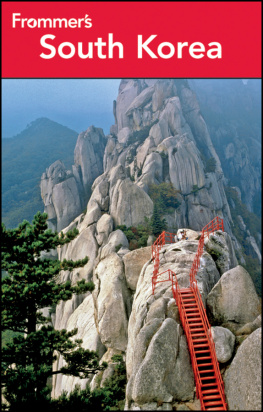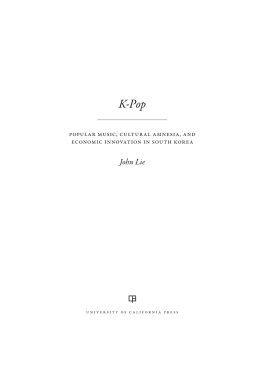
p.i
Innovation, Investment and Intellectual Property in South Korea
South Korea, known as the hermit kingdom, was wrenched from its isolation in the mid-1970s with the forced industrialisation of its economy by Park Chung-hee during his dictatorial regime. This led to South Korea becoming the most rapidly industrialised country in the world with world-class technology and a population who are largely digitally proficient. The course is charted from the rule of Park Chung-hee to his democratically elected daughter President Park Geun-hye who is now on trial for corruption. The legacy of the Park to Park era is not only the most fruitful in Korean history but also the most tumultuous, most recently because of the accelerated nuclear ambitions of North Korea. The analysis is through the framework of investment, innovation and intellectual property rights and the double-edged sword of cult and rapid action, so central to Korean culture.
Ruth Taplin received her doctorate from the London School of Economics and has a GDL in Law. She is the author/editor of 20 books and over 200 articles, and was the first featured author for Routledge in Asian Studies. She wrote freelance for The Times newspaper for nine years on Japan, Taiwan and Korea, and was a consultant to the Federation of Electronics Industry for nine years. She studied Japanese at Durham University over 20 years ago as part of a special course for future leaders in the Japanese field in the UK in tandem with the Nissan Institute, Oxford University. She is an honorary advisor to the Society for Interdisciplinary Business Research and is occasionally invited by the United Nations to act as an innovation expert because of her entrepreneurial experience as an innovator.
Professor Taplin is the editor of Interdisciplinary Journal of Economics and Business Law ( www.ijebl.co.uk ) founded by her seven years ago, in addition to being Director of the Centre for Japanese and East Asian Studies, which won Exporter of the Year 2000 for Partnership in Trading/Pathfinder. She has had a number of visiting affiliations with universities globally including Visiting Professor at Osaka City University, Visiting Professor at the Faculty of Management, University of Warsaw, Poland, Visiting Fellow at the University of Mumbai in January 2007 and in January 2008/April 2009 at the University of Bacheshir in Istanbul. In 2014 she was Visiting Professor in Nepal and keynote speaker at a conference there. She has also worked for a number of law firms specialising in intellectual property around the world on a project-by-project basis using her knowledge of East Asian intellectual property and intellectual property valuation.
She can be reached at .
p.ii
Routledge Studies in the Growth Economies of Asia
132 Economic Change in Asia
Implication for corporate strategy and social responsibility
Edited by M. Bruna Zolin, Bernadette Andreosso-OCallaghan and Jacques Jaussaud
133 Chinas Economic Culture
The ritual order of state and markets
Carsten Herrmann-Pillath
134 Labour in the Clothing Industry in the Asia Pacific
Edited by Vicki Crinis and Adrian Vickers
135 The Chinese and Indian Corporate Economies
A comparative history of their search for economic renaissance and globalization
Rajeswary Ampalavanar Brown
136 The Diffusion of Western Economic Ideas in East Asia
Edited by Malcolm Warner
137 Employers Associations in Asia
Employer collective action
Edited by John Benson, Ying Zhu and Howard Gospel
138 Business Leaders and Leadership in Asia
Ying Zhu, Shuang Ren, Ngan Collins and Malcolm Warner
139 Innovation, Investment and Intellectual Property in South Korea
Park to Park
Ruth Taplin
p.iii
Innovation, Investment and
Intellectual Property in South
Korea
Park to Park
Ruth Taplin
p.iv
First published 2018
by Routledge
2 Park Square, Milton Park, Abingdon, Oxon OX14 4RN
and by Routledge
711 Third Avenue, New York, NY 10017
Routledge is an imprint of the Taylor & Francis Group, an informa business
2018 Ruth Taplin
The right of Ruth Taplin to be identified as author of this work has been asserted by her in accordance with sections 77 and 78 of the Copyright, Designs and Patents Act 1988.
All rights reserved. No part of this book may be reprinted or reproduced or utilised in any form or by any electronic, mechanical, or other means, now known or hereafter invented, including photocopying and recording, or in any information storage or retrieval system, without permission in writing from the publishers.
Trademark notice : Product or corporate names may be trademarks or registered trademarks, and are used only for identification and explanation without intent to infringe.
British Library Cataloguing-in-Publication Data
A catalogue record for this book is available from the British Library
Library of Congress Cataloging-in-Publication Data
A catalog record for this book has been requested.
ISBN: 978-1-138-22192-5 (hbk)
ISBN: 978-1-315-40926-9 (ebk)
Typeset in Times New Roman
by Swales & Willis Ltd, Exeter, Devon, UK
p.vi
South Korea, known as the hermit kingdom, was wrenched from its isolation in the 1960s and 1970s with the forced industrialisation of its economy by Park Chung-hee during his dictatorial regime. This led South Korea to becoming the most rapidly industrialised country in the world with world class technology and a population that is largely digitally proficient. The course is charted from the rule of Park Chung-hee to his democratically elected daughter, President Park Geun-hye, who is now on trial for corruption. The legacy of the Park to Park era is not only the most fruitful in Korean history but the most tumultuous, most recently because of the accelerated nuclear ambitions of North Korea. The analysis is through the framework of investment, innovation and intellectual property rights (IPR) and the double edged sword of cult and rapid action, so central to Korean culture.
This book offers original analysis based on author interviews and experience in South Korea and with British and Korean diplomats. The idea of Korean culture being based on the double edged sword of cult and speed of action is used to explain both the negative and positive influences of this cultural tendency. An example of cult is the cult figure of Choi Tae-min, who influenced Park Chung-hee and was largely the reason he was assassinated, while his daughter Park Geun-hyes downfall was largely because of her relationship with Chois daughter Choi Soon-sil. This is the negative side of cult in Korean society. An example of positive rapid action is how Samsung Electronics overcame its exploding batteries fiasco to develop the number one smartphone in the world, the S8, in record time.
For those interested in economics, innovation, IPR, Korean culture, society and geo-politics, this is an invaluable book with implications far wider than just South Korea. It explains how with the right investment policies, innovation and IPR business success follows.
p.vii
The author would like to thank the Korean Embassy, all those she interviewed in South Korean companies over the years especially when writing for The Times of London. Thanks is also due to Peter Sowden, Routledge Editor, for his wise words, to James Brewer, formerly insurance editor of Lloyds List, for his invaluable assistance with the Korean shipping chapter and to Professor Hong Soon-gang, Professor of Economics and Law, Kinjo Gakuin University, Japan, for his incisive analysis.









